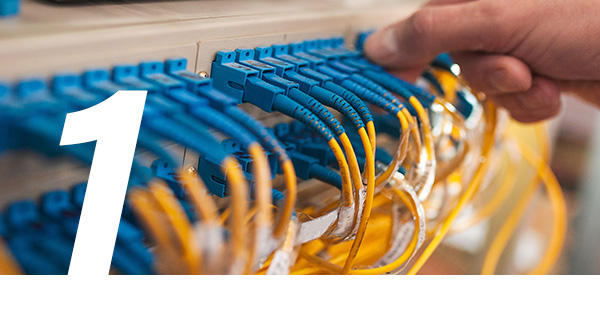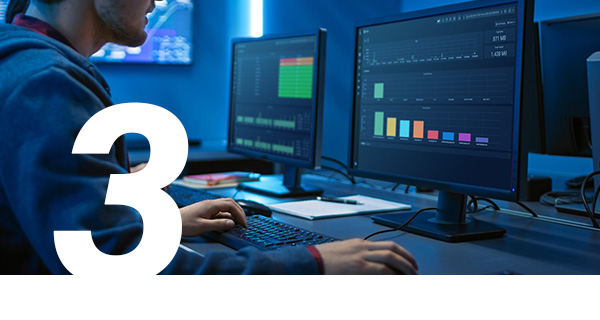Maritime Network Solutions
Ensure network efficiency and safety with real-time monitoringThe international shipping industry is responsible for the carriage of around 90% of world trade, therefore efficiency and safety are vital to the world economy. Maritime transport carries raw materials, food, and energy globally and requires accurate remote monitoring to better support the people and organizations that depend on them. The maritime world is not solely linked to the shipping industry; indeed, ships have different requirements depending on their type and purpose, such as commercial, passenger, cruise, or military ships; but since a ship stays at sea most of the time during its operation, greater practicality must be provided to its crew and passengers so that the efficiency and safety of its operation can be ensured. Operations include management of internal ship technologies in specific IT and OT networks, or management of external communications, such as vessel traffic, port, and terminal operations.
Monitoring maritime network infrastructures provides its own set of challenges:
- Delivering real-time data to onshore resources
- Streamlining business activities
- Remote repair & diagnostics
- Detecting networking and operational issues before they cause downtime
- Preventing unplanned downtime due to equipment failure
- Remote access control
- Remote troubleshooting (intermittent) issues on hard to reach locations

Maintain high network quality and boost safety
Constantly monitoring the health and performance of the entire IT network infrastructure is the only way to prevent outages, guarantee safety, and mitigate cyber risks. Monitoring packet-level insights into the networks is the only way to gain real-time visibility. Where to start?
Accessing the network traffic
Get a reliable, real-time overview of the network with physical and virtual TAPs placed at strategic points, and Bypass TAPs for an extra layer of security.
Managing & optimizing data flow
Build a visibility architecture with the help of Network Packet Brokers (NPB) to deliver actionable network data to monitoring and security tools.
Data capture and analysis
Leave no blind spots: get dedicated tools that enable monitoring on the spot, but also remotely, as well as back-in-time analysis. In particular, Deep Packet Inspection (DPI) allows drilling down into the metadata extracted from network packets to identify what protocols and applications are being used, who is using them, and from what devices. With this level of network traffic analysis, it is possible to detect the actual packets involved in client conversations and identify the root cause of technical or security issues.
Real-time network monitoring starts with high-quality infrastructures. Discover the Profitap portfolio, or request a quote for customized maritime network monitoring infrastructure solutions.



